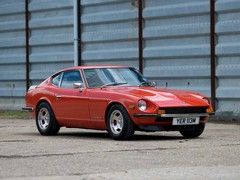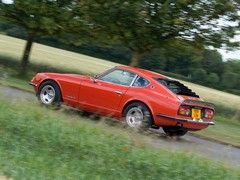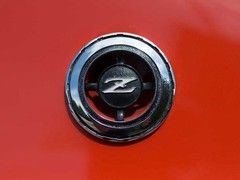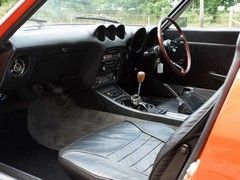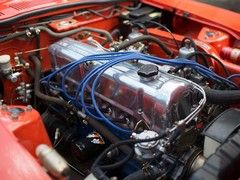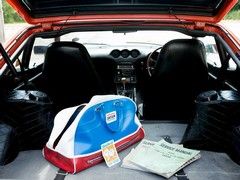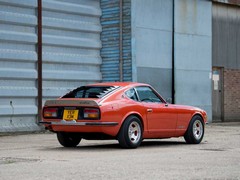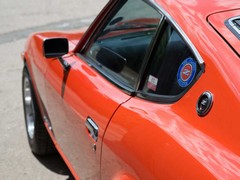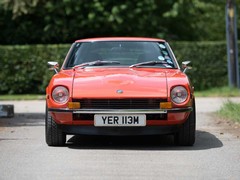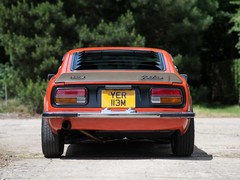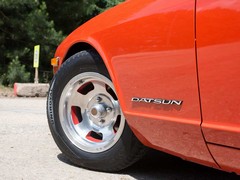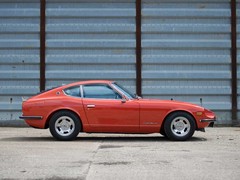Datsun 240Z: PH Heroes
The Datsun 240Z set the standard by which all Japanese sports cars should be judged
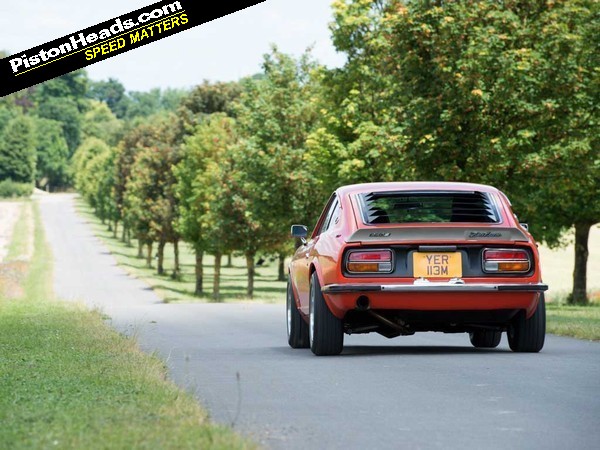
Gorgeous styling and impressive mechanical reliability meant than over 150,000 examples were sold between 1969 and 1975. And although many UK Datsun-badged 240Zs succumbed all-too-quickly to tin worm, those that have survived are even more desirable than they were 45 years ago. So much so that pristine examples are starting to rise in value.
Demand for rust-free cars has led many to source a mint US example from a 'dry' State and then have it converted to RHD. This can be done without too much fuss, and for some may represent the best route into 240Z ownership. But the most desirable cars of all - at least on this side of the Atlantic - have to be original UK RHD models, like Nik Wilson's immaculate red car you see here.
In the beginning
Nissan's Hiratsuka-built 240Z (code named S30) was launched in late 1969, with two Japanese Fairlady Z models and both Datsun and Nissan-badged US cars - boasting a 2.4-litre in-line six-cylinder motor. All coupes came with four-wheel independent suspension, plus front brake discs and rear brake drums, whilst the 2,393cc six-cylinder L24 SOHC engine employed twin side-draught SU carburettors producing 154hp at 5,600rpm. This meant a 240Z could hit 125mph and breach 60mph in just under eight seconds - respectable figures for 1969.
Torque was strong across the rev range, maxing at 146lb ft at 4,400rpm, and US cars came with either a four-speed manual or a three-speed automatic transmission. UK buyers had to wait until late 1970 to get their hands on RHD models though, with the official launch at the 1970 Earls Court Motor Show.
Billed as a Ford Capri and MGB GT rival an improved five-speed manual transmission was included, but import taxes had elevated the UK asking price to just over £2,000 - so sales weren't as strong as elsewhere in the world. It did bring sports car customers into Datsun showrooms for the first time though.
1971 saw the 240Z receive a minor facelift with restyled circular 'Z' pillar badging rather than a chrome 240Z emblem, and further tweaks to styling and engine emissions followed in 1972 and 1973. Sadly most UK cars tended to rust more quickly than their US counterparts, but that didn't stop UK enthusiasts from lusting after the 240Z until it was replaced by the 260Z in 1974.
Nissan's unique Z-car lineage, begun by the 240Z, has continued (mostly) successfully ever since; with models like the Z32 300ZX Turbo and Z33 350Z proving extremely popular. And you can still see plenty of 240Z design cues in Nissan's present-day Z34 370Z Coupe.
From A to Z
The 240Z driving experience however is very different. It's an old-school sports car in every sense of the word, but that makes it even more of a treat to drive. The large, thin-rimmed steering wheel is very upright and the wooden-handled gearstick throw long by modern sports car standards; but the unfussy cabin is spacious, the driving position low and that in-line six engine sounds damn near as good as an Austin-Healey 3000.
The cabin - like that in almost all Japanese sports cars - is a sea of black plastic, but those deeply-cowled instruments are a delight whilst the heavy steering is refreshingly direct. Needless to say you pay for it with a poor turning circle, but that's a price well worth paying.
Cabin ergonomics didn't exist when the 240Z was designed so the car's low-set window winders and door release won't do your back much good, and original vinyl seats can become pretty sweaty on all but the coldest of days. Sensibly Nik's car has leather seats fitted though, which were available as an option.
The 240Z's straight-six engine does require a bit of choke from cold but once properly warmed feels highly responsive. A tad recalcitrant around town, hit higher speeds on the open road and the 240Z really comes alive - emitting an inspiring baritone bark and plastering a smile right across your face. Admiring glances from all and sundry are assured, but a degree of caution is recommended on rough surfaces - even with a new set of bushes the 240Z's ride isn't up to modern standards. And if the road is at all wet or slippery, then watch out: after a moment of initial understeer that rear end just loves slide.
Take stock
Maintaining a 240Z won't break the bank, as long as you buy a rust-free example with a good history and a solid transmission. There are plenty of 240Zs out there but beware - many are in need of some TLC. Provenance is key, and it's all about the details - straight shut lines, old service manuals, period stickers plus a wad of old receipts and MoTs are all good indicators of a cherished example. The engine serial number is stamped on the VIN plate and the block itself.
Specialist routine servicing every 6,000 miles or 12 months is essential to keep your 240Z in rude health, and common maintenance issues include OE lighting controls and wiper motors which can fail, misbehaving door locks, seized parking-brake cables and cracked cabin trim.
You'll also need to get the 240Z's tappet clearances checked/adjusted, the spark plugs cleaned, CV points renewed, the brakes checked (wheels and drums off) and the steering joints regularly regreased. Get an enthusiastic specialist to do all this for you and you've got one of the most desirable classic sports cars out there.
Totally original examples tend to fetch the highest prices (expect to pay anything from £6,000 to £25,000, depending on condition and spec) but not everyone wants a stock 240Z. More and more owners are looking to modify their rides, with transplanted engines extremely popular - especially Stateside. We've heard of quite a few cars with six-cylinder Nissan 280ZX or Skyline engines, as well as a variety of V8s from BMW, Chevrolet and even TVR!
PH purists however should stick to Zeds still sporting their original L24 straight-six SOHC engine, for these are the cars that offer the best long-term investment potential.
DATSUN 240Z (1969)
Engine: 2,393cc 6cyl
Transmission: 4 and 5-speed manual, 3-speed auto
Power (hp): 151@5,600rpm
Torque (lb ft): 146@4,400rpm
0-60mph: 8.0 sec
Top speed: 125mph
Weight: 1,025kg
On sale: 1969-1974
Price new (1970): £2,038
Price now: £6,000 to £25,000-plus
Many thanks to www.zclub.net, the late Geoff Jackson (RIP) of Fourways Engineering and owner Nik Wilson for their help with this feature
Photos: Tom Begley
Gassing Station | General Gassing | Top of Page | What's New | My Stuff

